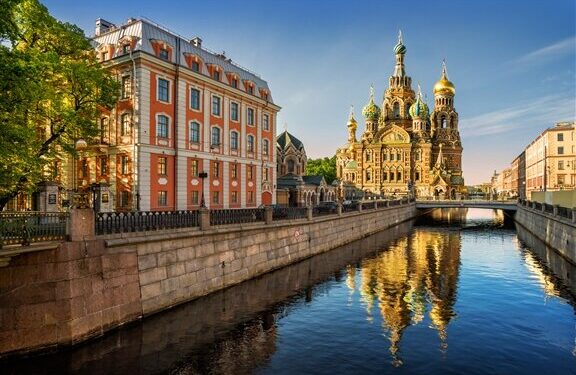Peter the Great’s vision rises from the marshes as St Petersburg is born
On 27th May 1703, Russian Tsar Peter the Great laid the foundation stone for what would become one of Europe’s most magnificent cities. St Petersburg emerged from the swampy delta of the River Neva, a testament to imperial ambition and an extraordinary feat of human determination against nature’s obstacles.
Peter’s decision to build a new capital was driven by his grand vision to transform Russia into a modern European power. After witnessing the architectural splendour of Western European cities during his travels, the young tsar was determined to create a “window to Europe” that would rival Amsterdam, Paris, and Venice. The location he chose—conquered Swedish territory along the Baltic Sea—was strategically perfect for trade and naval power, but practically nightmarish for construction.
The marshland presented seemingly insurmountable challenges. Workers had to drain vast swamps, drive countless wooden piles into the soggy ground, and battle constant flooding. The human cost was staggering. Thousands of peasants, soldiers, prisoners of war, and conscripted labourers perished from disease, exhaustion, and accidents during the city’s early construction phases. Some historians estimate that over 100,000 people died building Peter’s dream, earning St Petersburg the grim nickname “the city built on bones.”
Despite these horrors, Peter’s vision pressed forward with remarkable speed. He imported European architects and craftsmen, mandating that new buildings follow Western architectural styles rather than traditional Russian designs. The tsar decreed that all nobles must construct homes in the new city and spend part of each year there, effectively forcing Russia’s elite to abandon Moscow’s ancient traditions.
The city’s layout reflected Peter’s European aspirations. Wide boulevards replaced narrow medieval streets, grand palaces lined the waterfront, and an intricate network of canals earned comparisons to Venice. The Peter and Paul Fortress, begun on the day of the city’s founding, became both a symbol of Russian power and the burial place of future tsars.
Peter’s cultural revolution extended beyond architecture. He mandated Western dress, reformed the calendar to match European standards, and established the city as Russia’s new capital in 1712. St Petersburg became home to Russia’s first museum, its naval academy, and numerous educational institutions designed to modernise the empire.
The transformation succeeded beyond Peter’s wildest dreams. Within decades, St Petersburg had evolved from uninhabitable swampland into one of Europe’s great cultural centres. The city attracted foreign diplomats, merchants, and intellectuals, becoming the cosmopolitan heart of the Russian Empire.
Today, St Petersburg stands as Peter the Great’s greatest legacy—a UNESCO World Heritage site that perfectly embodies his vision of a European Russia. The Hermitage Museum, the Mariinsky Theatre, and countless baroque palaces continue to dazzle visitors with their beauty and grandeur.
The city’s founding represents one of history’s most audacious urban planning projects. Peter the Great didn’t simply build a city; he created a new identity for Russia itself, transforming a medieval empire into a European power through sheer force of will and an extraordinary tolerance for human sacrifice in pursuit of his imperial dreams.
newshub finance



Recent Comments